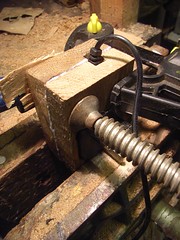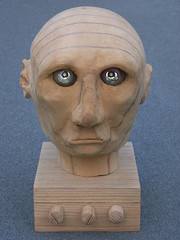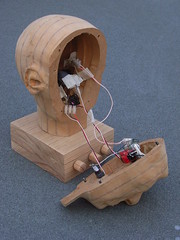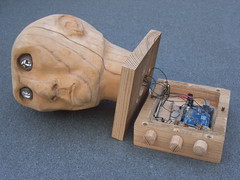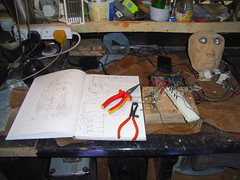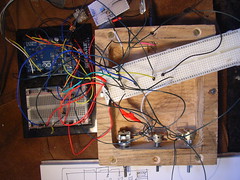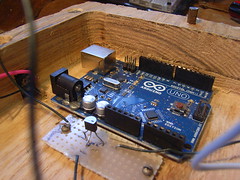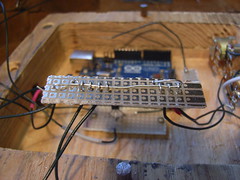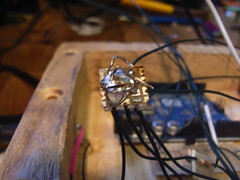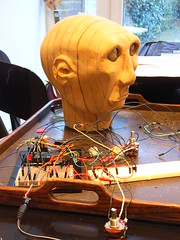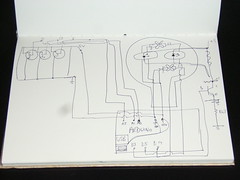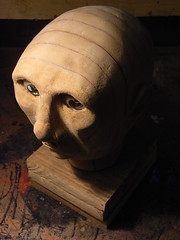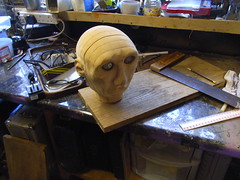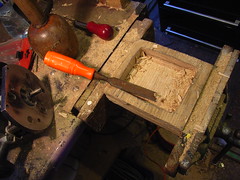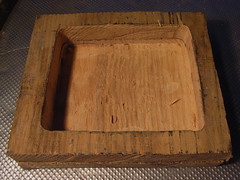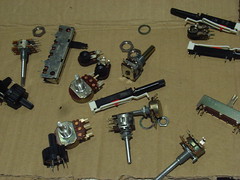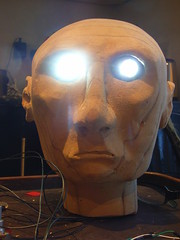Initially I started trying to take apart the plastic casing of the transformer, which looked like this. Unfortunately, the supply failed, which I believe to be due to fusin printed circuit connections with solder while trying to solder a new lead onto the circuit board. FAIL!
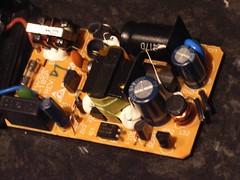
Having destroyed one supply, another was found in the shed. This was fitted up with an oak casing
This was made from two short pieces of oak plank, with a cavity taken out with an electric router
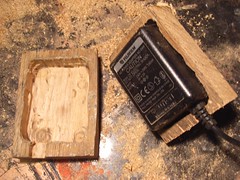
The two halves together look like this
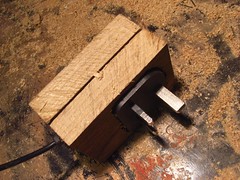
These are not flush. To do so they needed to be sanded together as one piece. This would only work once glued together. Here theyare in the vice with cramps attached (one traditional iron screw cramp, and one metal/plastic ratchet cramp)
